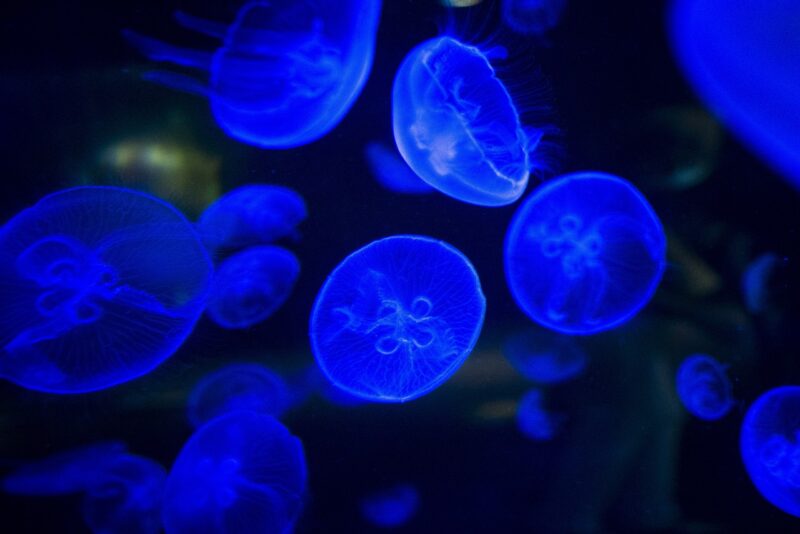
Bioluminescent bays are one of nature’s most captivating wonders, showcasing a magical glow that illuminates waters at night. These mesmerizing phenomena, which occur in various locations around the world, attract the curious and adventurous alike. This article delves into the science behind bioluminescence, the thriving ecosystems supporting these glowing waters, and the best places to witness this natural spectacle.
1. What is Bioluminescence?
Bioluminescence is the production and emission of light by living organisms through biochemical reactions. This glow can range from a soft blue to intense green hues, depending on the species involved. Bioluminescence is found in a variety of organisms, including:
- Marine Organisms: Many species of plankton, jellyfish, and some fish produce bioluminescent light.
- Terrestrial Organisms: Certain fungi and insects, like fireflies, also exhibit bioluminescence.
- Bacteria: Some bacteria contribute to the glowing effect in marine ecosystems.
The chemical reaction responsible for this glow occurs when a light-emitting molecule called luciferin reacts with oxygen, facilitated by an enzyme known as luciferase. This reaction can happen in various parts of the organism, leading to a spectacular light display.
2. The Ecosystem of Bioluminescent Bays
Bioluminescent bays are typically rich in nutrients and harbor unique ecosystems that thrive in specific environmental conditions. Here are some key components of these vibrant environments:
- Water Conditions: Warm, shallow waters are ideal for bioluminescent organisms. These conditions support the growth of dinoflagellates, one of the most famous bioluminescent organisms, that light up when disturbed.
- High Nutrient Levels: Waters enriched with nutrients due to natural runoff or human activities can lead to a bloom of bioluminescent plankton.
- Absence of Pollution: Clean, clear waters are essential for the visibility of bioluminescence. Polluted waters often suppress the growth of bioluminescent organisms.
Environmental factors play a critical role in maintaining the delicate balance necessary for these ecosystems to flourish. As such, many bioluminescent bays are sensitive to ecological changes and human activities.
3. Where to Experience Bioluminescent Bays
Several locations worldwide are renowned for their stunning bioluminescent bays. Here are some of the most famous spots:
- Mosquito Bay, Vieques, Puerto Rico: Often cited as the brightest bioluminescent bay in the world, Mosquito Bay is teeming with dinoflagellates that glow vibrantly when disturbed, creating a magical experience for visitors.
- Luminous Lagoon, Jamaica: This lagoon is famous for its glowing waters, where boat rides at night provide stunning views of the bioluminescent plankton.
- Halong Bay, Vietnam: While better known for its karst islands and emerald waters, Halong Bay offers scattered bioluminescent experiences to those who explore its shores.
- Toyama Bay, Japan: Known for its unique firefly squid, Toyama Bay exhibits bioluminescence both from the squid and the surrounding waters.
- Jervis Bay, Australia: The waters of Jervis Bay reveal bioluminescent phenomena, allowing visitors to kayak and swim within glowing waters during certain seasons.
Exploring these enchanting locations offers a glimpse into the fascinating world of bioluminescence while preserving and appreciating these unique environments.
4. The Importance of Conservation
Preserving bioluminescent bays is crucial for several reasons:
- Biodiversity: Bioluminescent organisms are part of intricate marine ecosystems that contribute to the overall biodiversity of our oceans.
- Tourism: Bioluminescent bays attract tourists, supporting local economies and encouraging sustainable practices in coastal communities.
- Scientific Research: These unique environments offer a wealth of knowledge about marine life, ecological health, and climate change effects.
Understanding the ecological significance and fragility of bioluminescent bays is key to fostering responsible tourism and implementing conservation measures to protect these stunning natural wonders for future generations.
5. Experiencing Bioluminescence: Tips for Visitors
If you’re planning to experience the thrill of bioluminescent bays, here are some tips to ensure you make the most of your visit:
- Timing is Key: Visit during the warmer months when plankton blooms are more likely to occur. Check local guides for the best times to witness the glow.
- Choose the Right Time of Day: The best time to visit is during the darkest hours of the night. Aim to arrive just before sunset for the best experience.
- Avoid Bright Lights: Minimize the use of phones or flashlights to fully appreciate the natural glow. Darkness allows for a better viewing experience.
- Engage in Eco-Friendly Tours: Choose tour operators that emphasize sustainability and conservation to protect these delicate ecosystems.
By following these tips, you can ensure your visit to a bioluminescent bay will be both memorable and environmentally-conscious.
Conclusion
Bioluminescent bays are a mesmerizing reflection of nature’s beauty and complexity. By understanding the science behind bioluminescence, exploring these enchanting locations, and advocating for their conservation, we can appreciate and protect these extraordinary ecosystems. Whether you’re a seasoned traveler or a curious explorer, witnessing the glow of bioluminescent waters will undoubtedly leave you in awe and wonder. Embrace the magic of bioluminescence, and let its brilliance illuminate your adventures.








